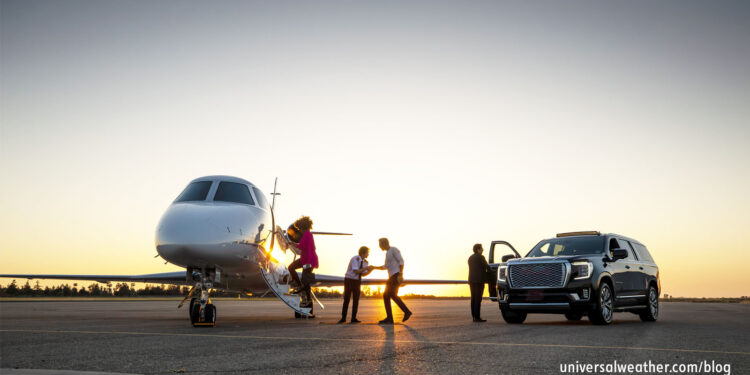Ground Transportation Planning for Business Aviation – Part 1: Options to Consider

This business aviation blog post is part of a series on different transportation options for your operation.
Planning for local ground transportation arrangements can be a critical consideration for many business aviation missions. As there are various types of options available, as well as assorted pros and cons to consider, it’s always important to know what is and what is not available and to have contingency plans ready.
The following is an overview of what you need to know when arranging local ground transportation at your destination:
1. Private/pre-paid crew and executive ground transportation
Private or pre-paid crew transport options are generally considered as vehicles with drivers, vetted by either your 3rd-party provider and/or local ground handler. This is usually the preferred choice for crew transport at many worldwide destinations as this option is generally pretty reliable, drivers will likely speak English, and safety and security are typically better ensured. There are also executive transport options to consider with VIP levels of service and higher quality vehicles; however, costs of VIP and executive transport options are typically higher. It’s always important to confirm these costs in advance to avoid “sticker shock.”
2. Taxis and public transport
Public taxis are available at most airport locations and are generally less expensive options than pre-paid transport. While public taxis can be reliable and safe at certain locations, such as in the London area, there are reliability and security issues to consider with this mode of transport in many parts of the world. The cons are that the taxi and driver are usually not vetted, there may be language barriers, vehicles may be in poor condition, and taxi may not be available when you need them. Particularly in higher security threat areas of the world, public taxis could potentially be a “trap,” and you could be opening yourself up as a soft target.
Likewise, public transport options – buses, rails, etc. – may or may not be good choices to consider, depending on the location. For example, the MRT public rail system in Singapore is a recommended and safe transport choice, but jitney bus options in Manila may not be appropriate from the security perspective. Always do your due diligence in advance.
3. Rental vehicles
Rental vehicles are popular and useful transport alternatives for crews familiar with the local area. Your ground handler can set and confirm these services. While cost and flexibility of rental vehicles may be attractive, be mindful that driving may be challenging in certain areas – with limited signage and parking, narrow roads, and manual transmissions just to name a few. You also need to assess your safety risks with renting and driving your own vehicle, as well as your risk of delay in the unfortunate event you get into an accident and have to sort out all the local processes and paperwork involved.
4. Ride sharing programs
Many people these days enjoy the flexibility of using ride-sharing Apps – such as Uber and Lyft – to book various forms of private transportation in major cities throughout the world. Be aware, however, that these forms of transport are difficult to vet, may be illegal in certain areas, and could have associated security risks. In addition, while many major cities permit the operation of ride-sharing programs, drivers in these programs are often not permitted to pick up from the airport – although many will still illegally attempt to do so if you request a vehicle. If you plan on using these programs in a city, make sure you have a clear plan of how and when you will use them.
5. Costs and cost estimates
To obtain accurate estimates for pre-paid, secure transport, and rental vehicle options be as specific as possible in terms of vehicle preference, type of driver (regular or security trained), and length of time needed. Do you want the vehicle to be at the airport 30 minutes prior to your arrival or at the scheduled estimated time of arrival? In some cases you may wish to have the transport provider pre-drive the routes, such as the one between the airport and hotel, and provide a security assessment. While there are higher costs for such services this gives you additional levels of security.
6. General tips on booking crew transport
- Use your 3rd-party provider or local ground handler to arrange your local transport
- Be very specific on what you require for the crew and/or passengers
- Avoid high-profile vehicles that may make you more of a target
- Specify the type of driver you require and language capabilities
- Consider the security threat level of the area you’re visiting and routes you’re planning to take
- Specify length of time, or hours per day, you’ll need the particular transport so that the ground transport provider will be able to provide you with a better cost estimate
Conclusion
It’s always best to be as specific as you can when requesting local transport arrangements, in terms of types of vehicle, driver knowledge, language ability, and length of time transport will be needed. Whether a particular local transport option works for you, such as public taxis and/or rental vehicles, will depend upon your familiarity of the area and your company’s safety standard operating procedures.
Stay tuned for Part 2, which covers secure transportation information for your operations.
Questions?
If you have any questions about this article or would like assistance arranging your ground transportation needs, contact me at traciecarwile@univ-wea.com.



